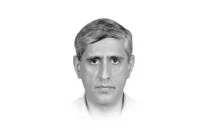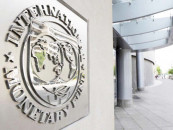Global youth crisis
Climate anxiety looms like a spectral presence rising seas mirrored by rising dread

In every corner of the globe, a silent storm gathers behind youthful eyes. From classrooms in Dublin to refugee camps near Damascus, from the neon-lit corridors of Tokyo to the vast digital plains where young minds now dwell, a quiet unravelling is underway. Youth today are not merely restless or rebellious, they are anguished. In this age of infinite connection, we are raising a generation more isolated, more anxious and more uncertain than any in recent memory. For many, self-harm, loneliness and despair are not psychological curiosities but daily companions.
Recent global studies reveal that one in every five adolescents suffers from a mental health condition, yet nearly 70 per cent of them receive no treatment. In low- and middle-income countries, this figure soars beyond 80 per cent, exposing vast deserts of neglect. Depression has become the leading cause of illness and disability among young people worldwide. Suicide, once unspeakable, is now the fourth leading cause of death among 15 to 29-year-olds. These are not just statistics. These are stories of dreams deferred, lives dimmed, voices stilled.
The culprits are not hidden. Climate anxiety looms like a spectral presence rising seas mirrored by rising dread. Academic pressure has become a suffocating noose, especially in nations where education is worshipped but compassion is rationed. Economic insecurity, unemployment and the burden of being born into collapsing systems have created a generational despair with no name. Then comes the algorithmic drip-feed of inadequacy: social media scrolls that compare, commodify and distort. In attempting to curate perfection, many young people have lost sight of reality and of themselves.
But perhaps more wounding than any external pressure is the silence within homes and institutions. In many cultures, mental illness is still cloaked in shame or dismissed as weakness. A boy's tears are mocked as softness. A girl's withdrawal is judged as moodiness. Families shun therapists as if madness were contagious. In schools, the counsellor's office is too often empty, or worse, unavailable. Where intervention is most needed, infrastructure is weakest.
And yet, hope endures. Countries like Finland and New Zealand have begun integrating mental health into their national education curriculums, teaching emotional literacy as vital knowledge, not a luxury. Community-based therapy models in India and parts of Africa are bridging access gaps through peer-led initiatives and tele-counselling. In the UK and Ireland, youth charities are pushing for legislation that embeds mental well-being into social policy, not just health care.
The way forward must be neither medicalisation nor denial, but restoration. Mental health must be woven into the everyday fabric of society. Schools must become sanctuaries of support, where anxiety is not penalised but understood. Digital spaces must be reimagined, not as echo chambers of insecurity, but platforms of solidarity. Families must relearn the art of listening and not with judgment, but with grace.
Governments, too, must rise from indifference. Investment in child and adolescent mental health services should no longer be seen as expenditure, but as the foundation of any sustainable future. For a nation that fails its young fails itself.
Let us not wait for another obituary to mourn what might have been. The youth of this world are not merely our future; they are our present. Their anguish is real, their voice urgent, their healing possible. But they cannot walk this path alone.
In the end, to care for the mind of a young person is to cradle the soul of a generation. If we nurture them with understanding, patience, and policy that prioritises well-being over performance, perhaps we shall not only mend minds, but we may also begin to heal the world itself.





1729685382-0/Untitled-design-(57)1729685382-0-208x130.webp)











COMMENTS
Comments are moderated and generally will be posted if they are on-topic and not abusive.
For more information, please see our Comments FAQ